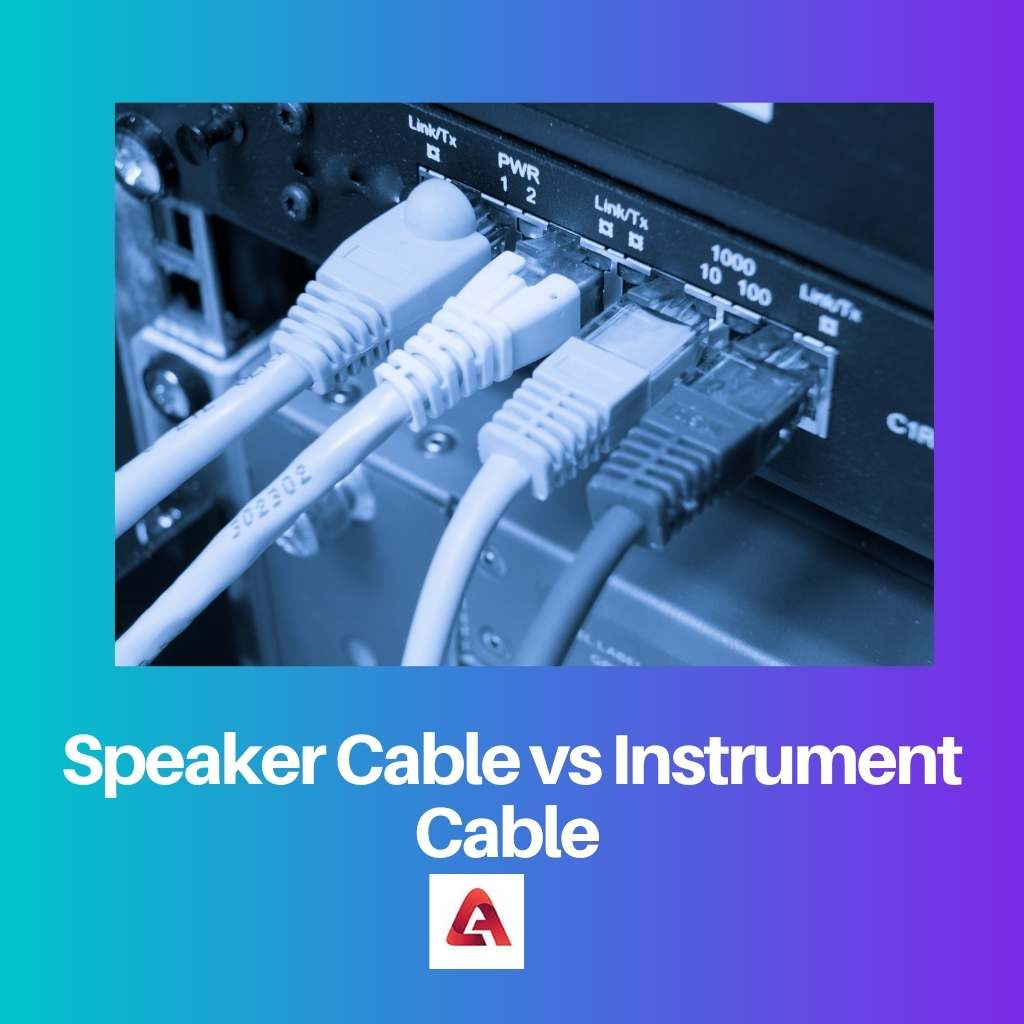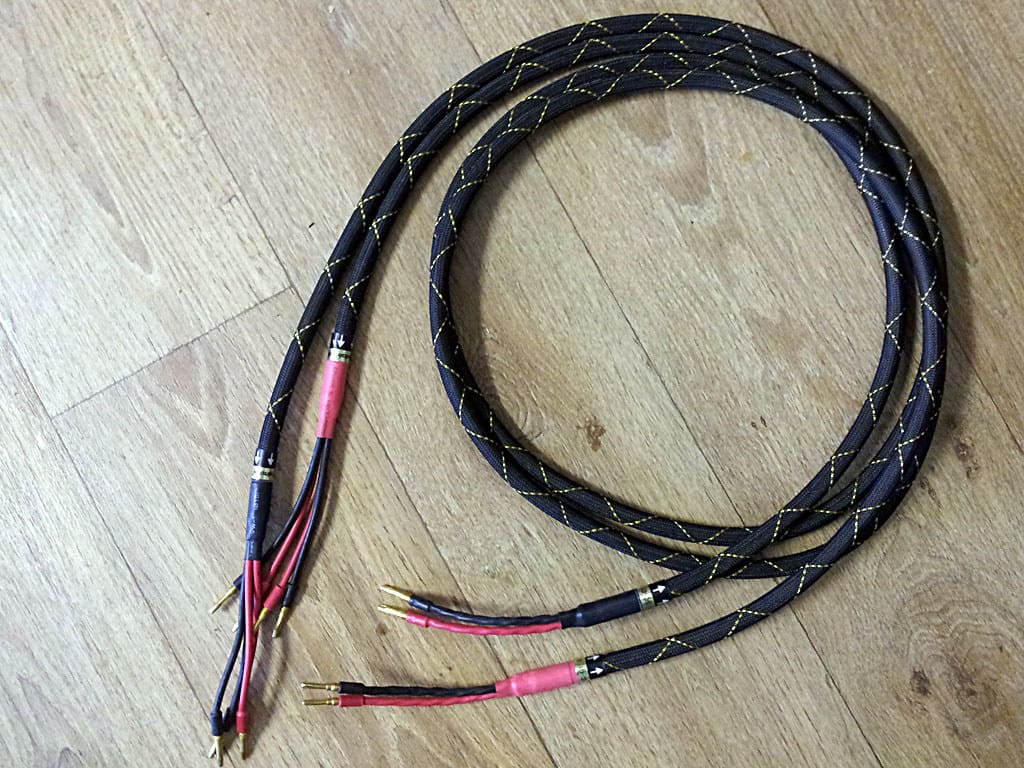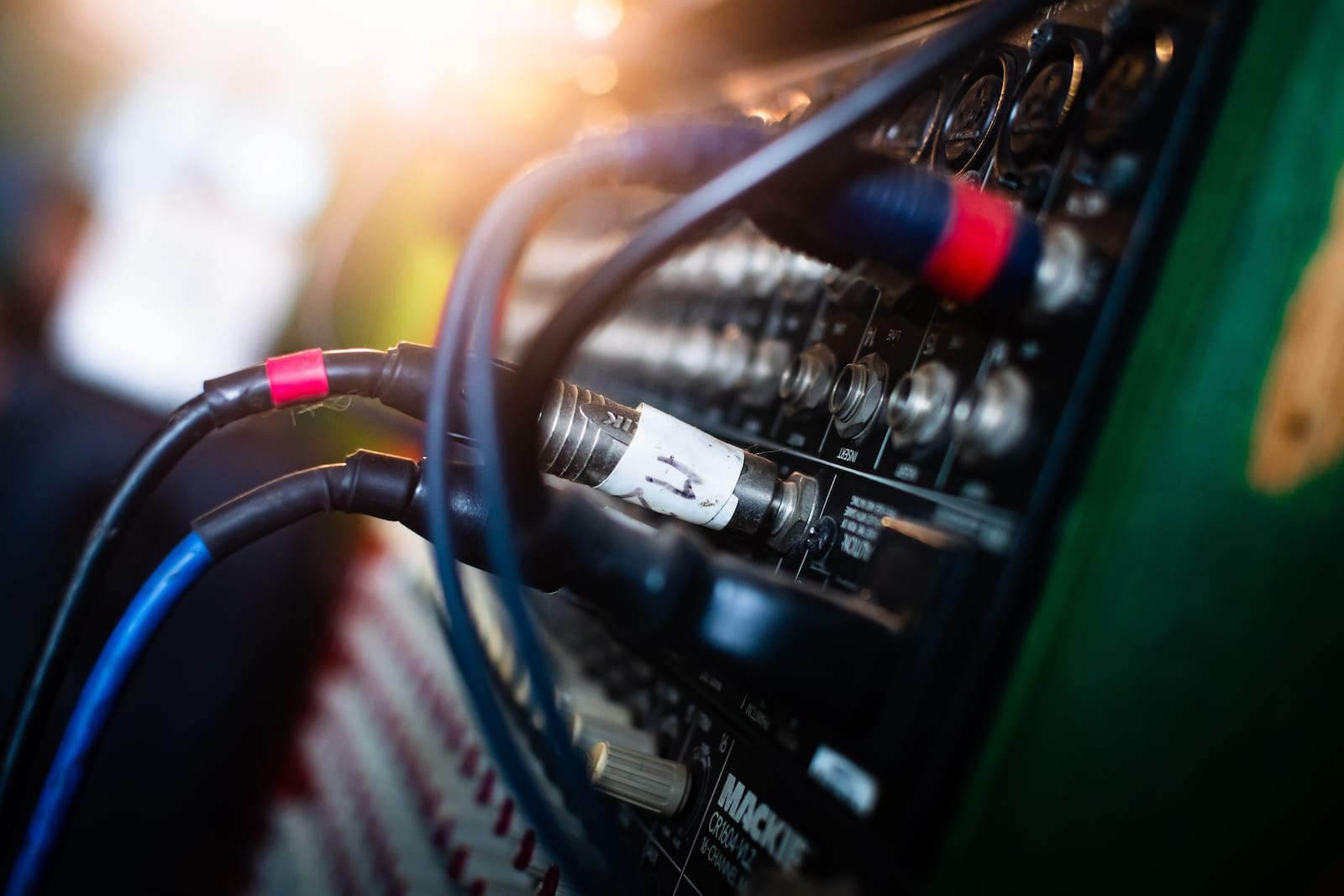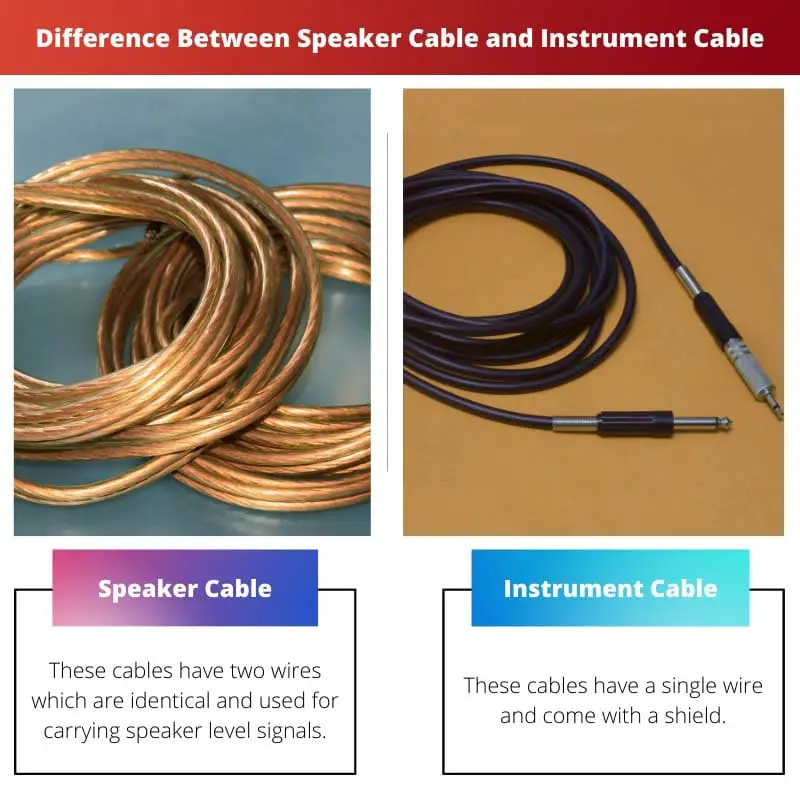Both the terms speaker cable and instrument cable refers to cables used for transferring signals from one device to another.
The speaker cables consist of two identical wires and are useful for carrying signals from an amplifier to your speaker system.
On the other hand, instrument cables are designed to transmit a low level of audio signals and consist of only one wire and a shield. Let us understand the difference between the two types of cables in detail.
Key Takeaways
- Speaker cables transmit amplified audio signals to speakers, while instrument cables connect instruments to amplifiers.
- Instrument cables have shielding to prevent external noise interference, unlike speaker cables.
- Speaker cables have a lower resistance per length, which helps maintain audio quality over long distances.
Speaker Cable vs Instrument Cable
The difference between speaker cable and instrument cable is that the former has two wires which are identical and used for carrying speaker-level signals whereas the latter comes with a single wire as well as a shield that helps in carrying instrument-level signals.

A speaker cable is used for connecting speakers to the audio system. When the signal is sent through these cables, it gets translated to a mechanical movement which in return induces speaker cones to vibrate properly.
The most important properties of a speaker cable are its resistance, conductance and inductance.
An instrument cable is a type of cable which consist of conductors that helps in conveying low-energy electric signals. These cables are designed in such a way for transmitting a signal which is devoid of any kind of external interference.
Comparison Table
| Parameters of Comparison | Speaker Cables | Instrument Cables |
|---|---|---|
| Definition | These cables have two wires which are identical and used for carrying speaker level signals | These cables have a single wire and come with a shield |
| Transmission | These are designed in a way to transmit strong signals from amplifier to your speakers | Instrument cables are used for transmitting low – level audio signals |
| Designed for | A speaker cable can easily handle those signals which are powerful enough to be produced from an amplifier. | When a signal will reach its destination then it will be amplified and the noise will be amplified as well. So, instrument cables are designed in a way to minimise this noise. |
| Shield | Speaker cables don’t have any shield | Instrument cables come with a shield |
| Type of signal it can carry | Strong signals | Weak signals |
What is Speaker Cable?
Speaker cables are wires used for electrical connections between amplifier sources and speakers. These can be of two types, bi-wire and single-wire speaker cables.
The former is used when the speaker and amplifiers come with two sets of connections. On the other hand, the latter provides a more musically coherent sound.
For making speaker cables, copper is the most common material used as it costs low and has low resistance as well. The speaker cables have several properties that must be considered while purchasing one.
The properties are resistance, capacitance and inductance, these are scientific terms that have an important role to play when it comes to speaker cables.
If the resistance is low, then it allows more of the source power to flow through the coil of the speaker. Thus, copper wires are used as they have low resistance.
Some speaker cables are very cheap, and some can be expensive. It depends upon the number of properties of the wire, which helps improve the sound quality. In most cases, a 4mm wire is enough, but it also depends upon the requirement of the person.

What is Instrument Cable?
An instrument cable is defined as a low-energy cable that is used for transmitting low-level sound from one device to another. The wires of this cable come with shielding, which ensures that there is no disturbance produced from any other device.
These cables are multiple conductor cables that help in monitoring electrical power systems and other associated systems. Instrument cables have a shielding material which is an electromagnetic shielding that is wrapped around the cable and helps in the reduction of unwanted noise.
We cannot use an instrument cable in place of a speaker cable as it can damage the equipment. When a signal reaches its destination, it will get amplified, and the noise will be amplified, too in such cases, an instrument cable will help to minimise the excess noise produced.

Main Differences Between Speaker Cables and Instrument Cables
- A speaker cable has two identical wires, whereas an instrument cable has a single wire and a shield, the shielding helps in minimizing the noise produced by your equipment.
- Speaker cables are used for transmitting high-level sound, whereas instrument cables are for low-level sound transmission.
- If we use a speaker cable instead of an instrument cable, it will produce extra noise, on the other hand, using an instrument cable in place of a speaker cable can be really dangerous for the device you are using.
- Both speaker and instrument cables have the same kind of connectors, but they are designed to serve different applications.
- Speaker cables are designed in a way to be used for producing powerful sound, whereas instrument cable is used for relatively low sounds.





